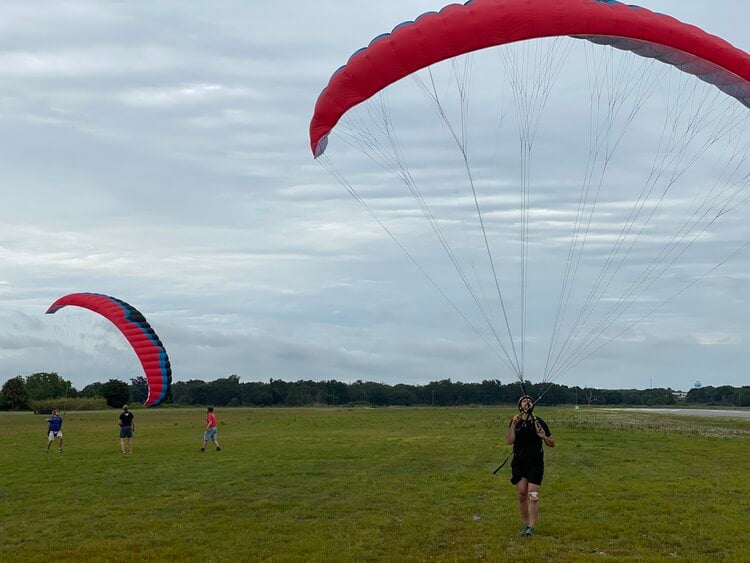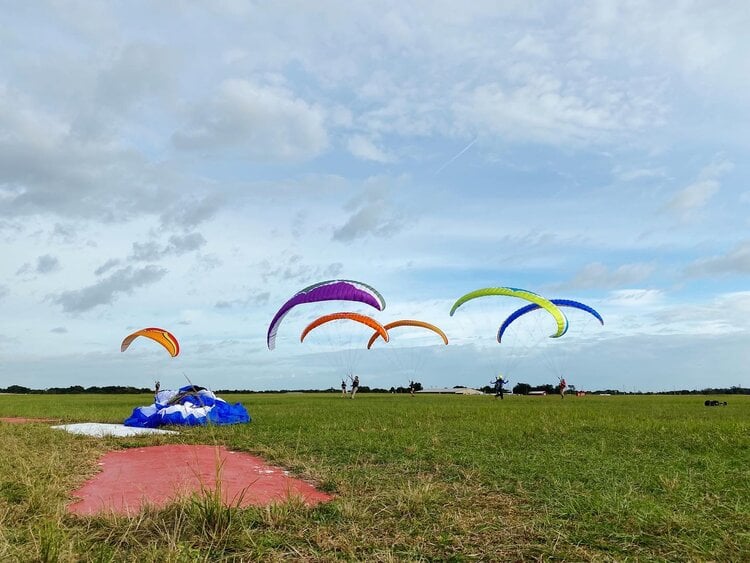While a lot of components are involved in learning to fly a powered paraglider, kiting is the foundation of the sport. Honing in those crucial ground handling skills is undoubtedly one of the biggest keys to finding success. This means spending a significant amount of time learning how to kite is in order, not only that, but even when you’ve successfully learned how to fly your paramotor continuing to kite and keep those needed ground handling skills proficient is truly one of the biggest secrets to becoming an excellent pilot. Ask any of the professionals, they’ll tell you time and again to kite, kite, and then kite some more, because that’s exactly what they do to stay sharp and progress further in the sport.

As we mentioned, ground handling is the foundation, and only one of the first steps in learning to fly – so much more is involved in PPG – but mastering kiting is a must. That being said, get training to fly a paramotor. Just because you’ve learned how to kite, and kite well, does not negate actual instruction from a professional. Whether you’re training with us at Aviator Paramotor or someone else, definitely seek out help. The black truth is that paramotoring without instruction could kill you, but when properly trained it has the potential to be one of the greatest experiences of your life. Don’t take training for granted.
Keep reading to learn more about why kiting is the foundation of PPG with the following practical tips.
YOUR MENTAL STATE AND ATTITUDE ARE EVERYTHING
Just like with flying, your mental state and attitude start on the ground. Having this type of awareness is crucial – paramotoring is most certainly a mental game. Kiting is no exception. Not only for your safety, but also for the safety of others. Understanding where you stand mentally and emotionally is a complete game changer.
Are you in good spirits, ready to seize the day and take on new challenges? Are you comfortable practicing kiting with a positive attitude? Then go kite!
Or, are you feeling a bit out of? Not quite yourself, possibly angry, sad, or upset for some reason? If so, then consider waiting until you feel more like yourself.
When you aren’t in the right headspace it means your reasoning and rational are hindered, which also means you could make some truly poor decisions. Those poor decisions could lead to mistakes, both big and small. You could damage your gear and ultimately endanger yourself and others.
For flying, and yes, even ground handling, one of the biggest tips for success is knowing yourself well enough to say, “you know what, I’m not okay right now, I shouldn’t be doing this.” Take a step back, regroup, and try again later – there’s no shame in taking this type of precaution.
We’ll explain further why having a positive headspace is important as you continue to read.
LET THE WING LEAD YOU, IT’S ABOUT FEELING AND INNATENESS
With kiting it’s going to come down to practicing, practicing, and, oh yeah, practicing even more. In doing so you familiarize yourself with the wing. While you’re in control, let the wing lead you. The art of ground handling is allowing yourself to feel the wing’s subtle tugs, and then maneuvering yourself accordingly to keep it steadily overhead. Don’t fight to pull the glider where you want it to go, but instead cultivate the needed skills to shift it naturally, letting the wing do the heavy lifting.

It sounds a bit strange, but “becoming one” with your glider is yet another crucial key to success. Treat the wing as you would a dance partner and move with it. Developing an innate sense of how your wing moves is the ultimate secret to successful ground handling.
The more you pursue this skill, the more it will become second nature to you, and before long you’ll be able to predict which way your wing will move according to your own steps, along with the wind and its movements. As you begin to master kiting, you’ll learn how to direct and redirect the wing as needed and with certain ease.
FIND A SAFE LOCATION TO PRACTICE
As always, safety is key in the sport of PPG, and most certainly in kiting. When it comes to actually practicing, picking a prime location is important. You’ll want to find as much open space as possible to lessen the likelihood of an accident, not to mention you’ll want a lot of room to run and, no pun intended, spread your wings for that practice. Avoid areas that have a lot of trees, bushes, and the like. If you’re in a city, avoid overly crowded places, and search out as open a space as you can possibly find. Perhaps you’re able to use a local ball field, if so, check to see if its overly crowded with bleachers, power lines, and other obstructions.
Also consider things like, is there a road nearby? What are the odds your glider might fall into it and cause an accident? Are there too many people around? Maybe your huge wing will make them nervous.
Possible good locations could be your local municipal airport. Because that’s considered public, you technically have the right to fly there (although it’s best to build up good relationships and ask for permission), and people EXPECT to see things flying around. You can also use available space there for kiting. Also look for wide open fields and other clear spaces.
Because we want to further the sport of PPG, always consider your surroundings and how it may effect the people around you too. Doing our part to keep up a positive reputation is important.
This is also where having a clear head is crucial, because if you’re upset or simply feeling off, your likelihood of making good decisions has decreased significantly. Anything could happen, which is why having a good attitude and knowing you’re in the right headspace is non-negotiable. You might hit a power line or end up in the road because you thought you could “handle” the space you’re in, even though you weren’t feeling 100%.

ALWAYS CONSIDER WIND AND WEATHER CONDITIONS
While it’s true that in times when it’s unsafe to fly a paramotor you can still kite, even then there are still limits depending on your level of expertise. So, learning about weather and wind patterns is a huge key to successful ground handling.
Maybe you have a nice, long field to practice in, but it’s lined with trees on the shorter sides. If the wind is blowing/gusting toward the trees that long field won’t do you much good.
On top of knowing which way the wind is blowing, also knowing just how strong it is, and how strong it’s gusting could also mean avoiding some serious injuries. The gust factor is often more crucial than just the steady state wind. A strong unexpected gust has the potential to cause harm.
Make note of additional rotor or mechanical turbulence – that is the air that rolls over any objects surrounding you like trees, buildings, power poles, etc. That turbulence will also affect you adversely, it could knock you into things or send you sailing in directions you don’t intend, which could also lead to accident or injury.
Crafting a certain forte for forecasting is integral to the sport of PPG. Looking at not only the immediate weather – in the time frame you wish to kite in – is important, but so is the forecast for the rest of the day. Bad weather could strike out of no where, or even arrive earlier than expected, so being conscientious and possibly deciding not to kite on a day where rougher conditions are forecasted is smart.
Again, having that clear headspace is also important. Make sure you’re kiting in conditions you’re able to handle. Listen to your gut, if something feels off or wrong, always choose to wait until situations improve.
While so much more could be said about the importance of kiting, the how-tos, and mechanics involved, hopefully this has inspired you. Maybe its kindled an even bigger fire to pursue paramotoring. It’s a truly intricate, demanding sport, but mastering the art form of this type of flight is beyond rewarding for those willing. It’s suited to all types of people, from all walks of life, and the possibilities for exploration are endless. You simply have to build it from the ground up.
